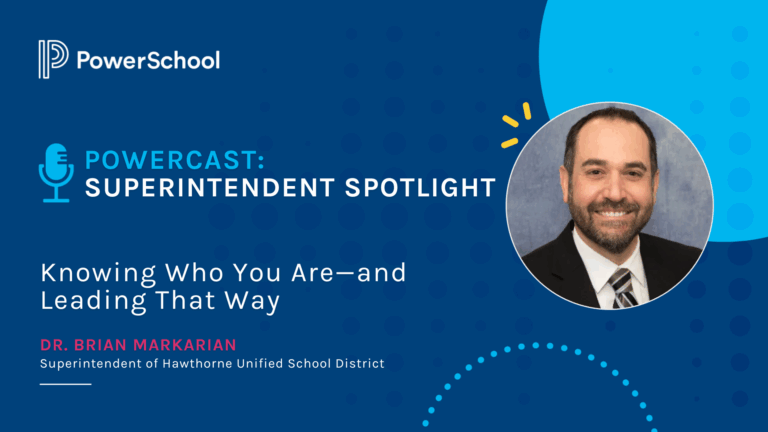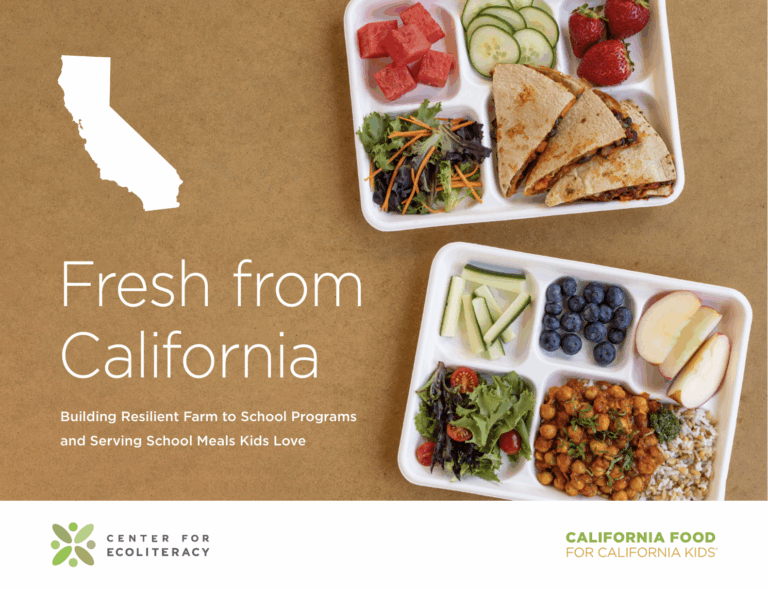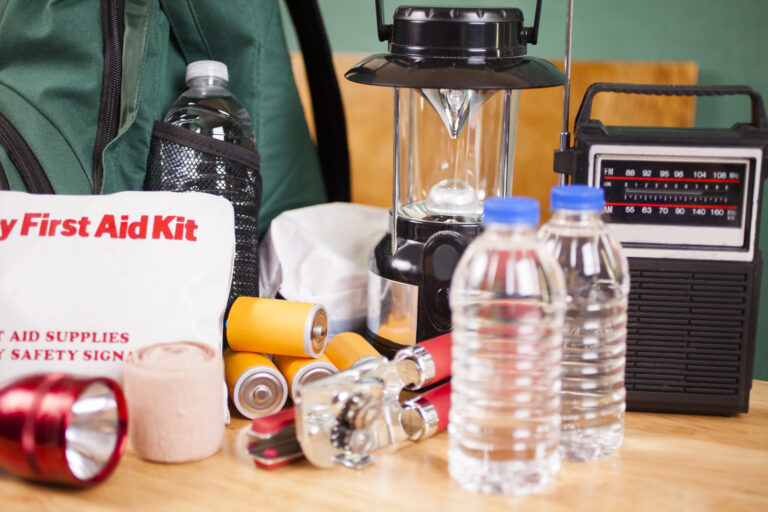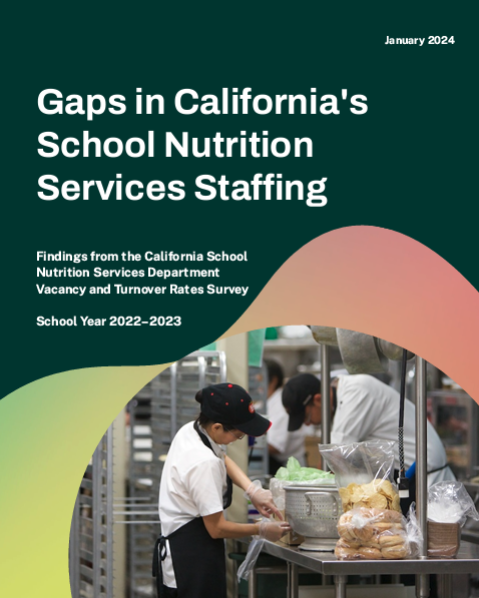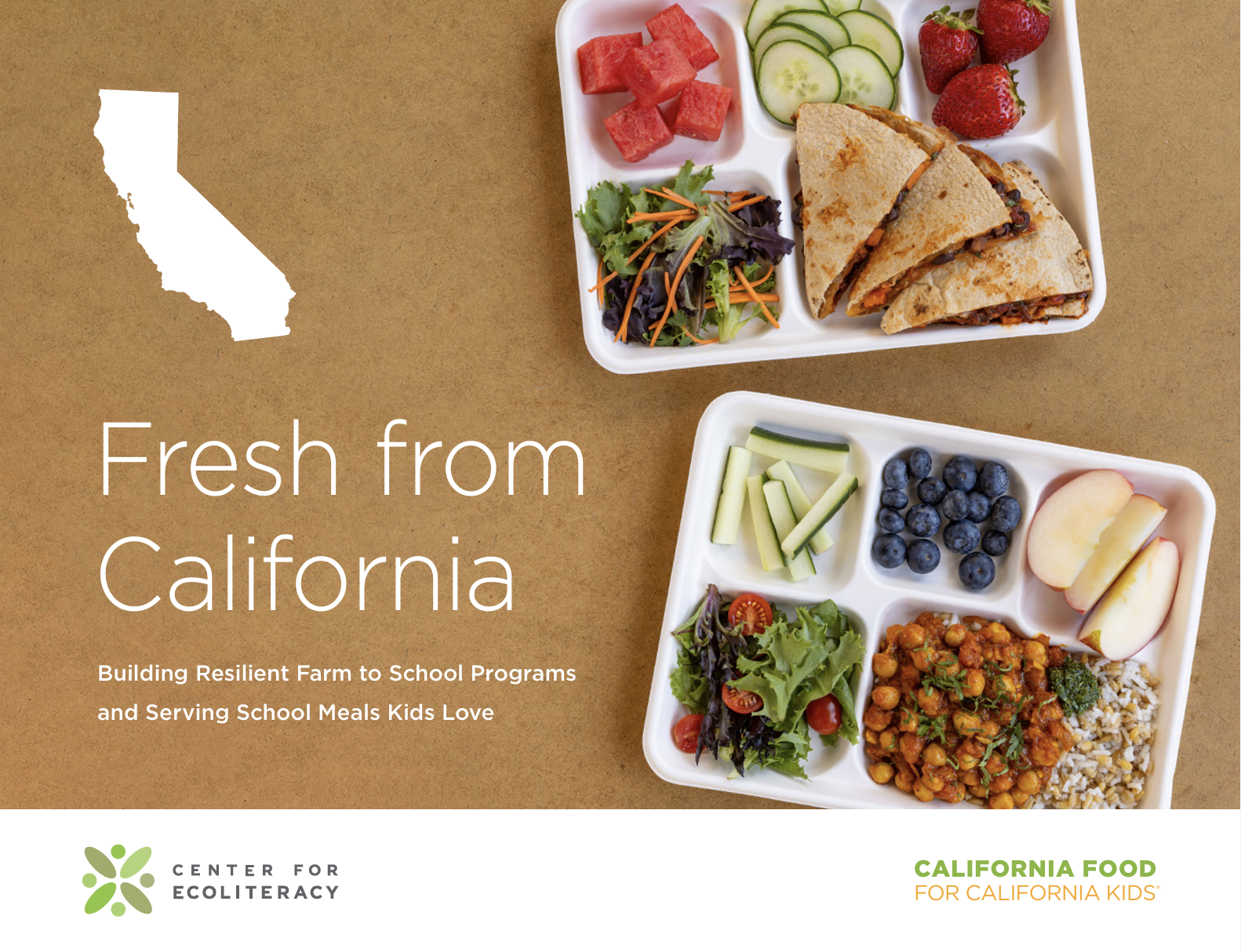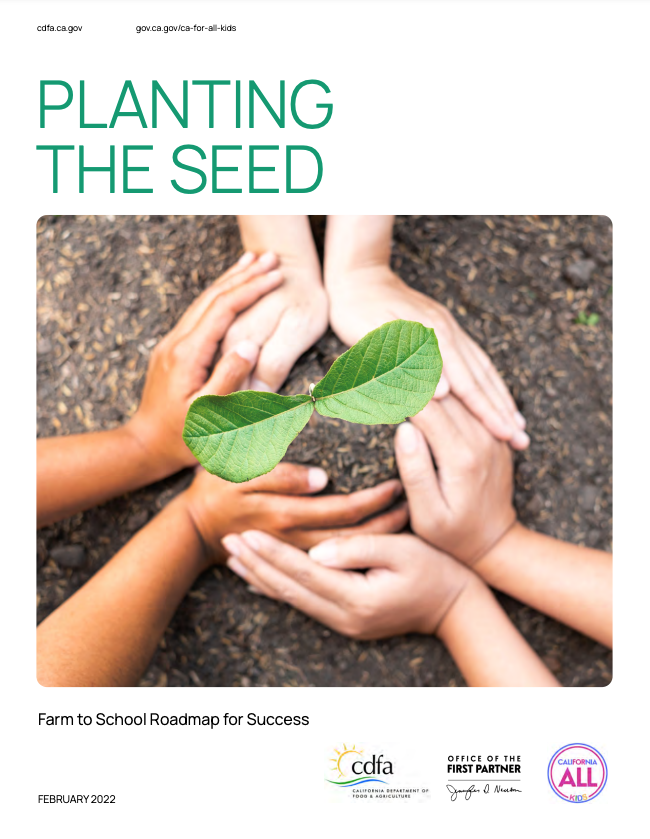School Meals for All, or universal school meals, means that every K–12 student in California’s public schools is now offered free breakfast and lunch at school, permanently. The Center for Ecoliteracy is sharing the most important things to know about this new policy and how you can support your students, school nutrition department, and school district:
What are the Key Benefits of School Meals for All?
- Improved nutrition: students who consume school meals are healthier
- Better academic performance: healthy school meals prepare students to learn
- Reduced absenteeism: providing school meals reduces absenteeism and tardiness
What Happens to Meal Application Forms?
Continuing to collect household income information is required to maximize federal funding and secure Local Control Funding Formula (LCFF) entitlements for your school district. Here’s how to collect that information from households:
- Schools operating standard counting and claiming procedures: Continue to use the federal Meal Application Form every year. CDE explains this process and has a template available. While the form requests a social security number, note that households are not required to include it.
- Schools operating Provision 2: Use the federal Meal Application Form once every four years to establish a base year for both federal meal reimbursements and LCFF purposes. In non-base years, use the Alternative Income Form only for newly enrolled students for LCFF purposes. The Alternative Income Form is a simplified form that can be filled out online or on paper. This form does not ask for social security information. CDE has templates available in multiple languages.
- Schools operating Community Eligibility Provision (CEP): Use the Alternative Income Form once every four years to establish a base year for LCFF purposes. In non-base years, use the Alternative Income Form only for newly enrolled students.
- If students are directly certified: Families don’t need to fill out forms. Whether you’re operating standard counting and claiming or a federal provision, there is no need to collect information from households where all students are directly certified through CalFresh (SNAP), CalWORKS, or Medi-Cal free benefits, or are certified homeless, migrant, runaway, or foster. If a student qualifies for CalFresh, CalWORKS, or Medi-Cal, you can certify the entire household
How Can Our District Encourage Households to Fill Out Income Forms?
Here are a few best practices from school districts across the state:
- Easy access. Make them available to fill out online, and if possible, include a mobile-friendly version.
- School registration. Include them in the annual school registration packet.
- Direct outreach. Work with principals, school secretaries, and others to do direct outreach to households.
- Tie to funding. Tell families that these forms are important to secure funding for their child’s classroom, including teacher salaries and school supplies.
- Additional benefits. Communicate the additional benefits available for families that qualify for free or reduced-price meals (e.g., discounted utilities like internet services, SAT fee waivers, after-school programs, and more).
- Who qualifies? Communicate that benefits are available regardless of citizenship status, information will not be shared, and school meal benefits are not subject to the “public charge” rule.
How Can Our District Support the Success of School Meals for All?
School district administrators, principals, and teachers play an important role in supporting School Meals for All. Here are a few ways you can help:
- Join students for a meal. It sounds simple, but participating in the meal program can help to reduce the stigma around school meals, which has historically prevented many students from participating and accessing healthy school meals.
- Encourage educators to incorporate nutrition education. Share lessons with classroom teachers, after-school educators, and garden instructors about food and health, providing students with opportunities to learn about where their food comes from and how it gets to the table.
- Involve nutrition services in setting bell schedules. Including nutrition services staff in decision-making about bell schedules can help ensure that there is adequate time for students to eat. Consider implementing recess before lunch, breakfast after the bell, and/or longer meal periods to improve student nutrition, attendance, and academic success.
- Tap into state and federal funding for school nutrition. Improved kitchen facilities and training for staff can help take your school nutrition program to the next level with more scratch cooking. Seek out opportunities to harness extra funding for your nutrition program, such as the $600 million for kitchen infrastructure and training and the $100 million for School Food Best Practices in the 2022 state budget (See CDE Nutrition Funding for more information).
- Apply to the Farm to School Grant Program. With $30 million allocated in the 2021 and 2022 budgets, California has the largest farm to school grant program in the country. Sign up for the CA Farm to School Newsletter and visit the CA Farm to School website for more information.
- Invite California policymakers to join your students for a meal. Help celebrate the success of School Meals for All by inviting your representatives to experience a meal at your school.
- Join the California Food for California Kids® Network. This free program supports school nutrition directors in building capacity to provide all students with fresh, locally grown school meals and create connections between the cafeteria, classroom, and garden. Join the Network today.




